Baby-led weaning: How to get started and what to serve, by the nutrition experts
Baby-led weaning (BLW) can be an overwhelming idea - here's how you can get started
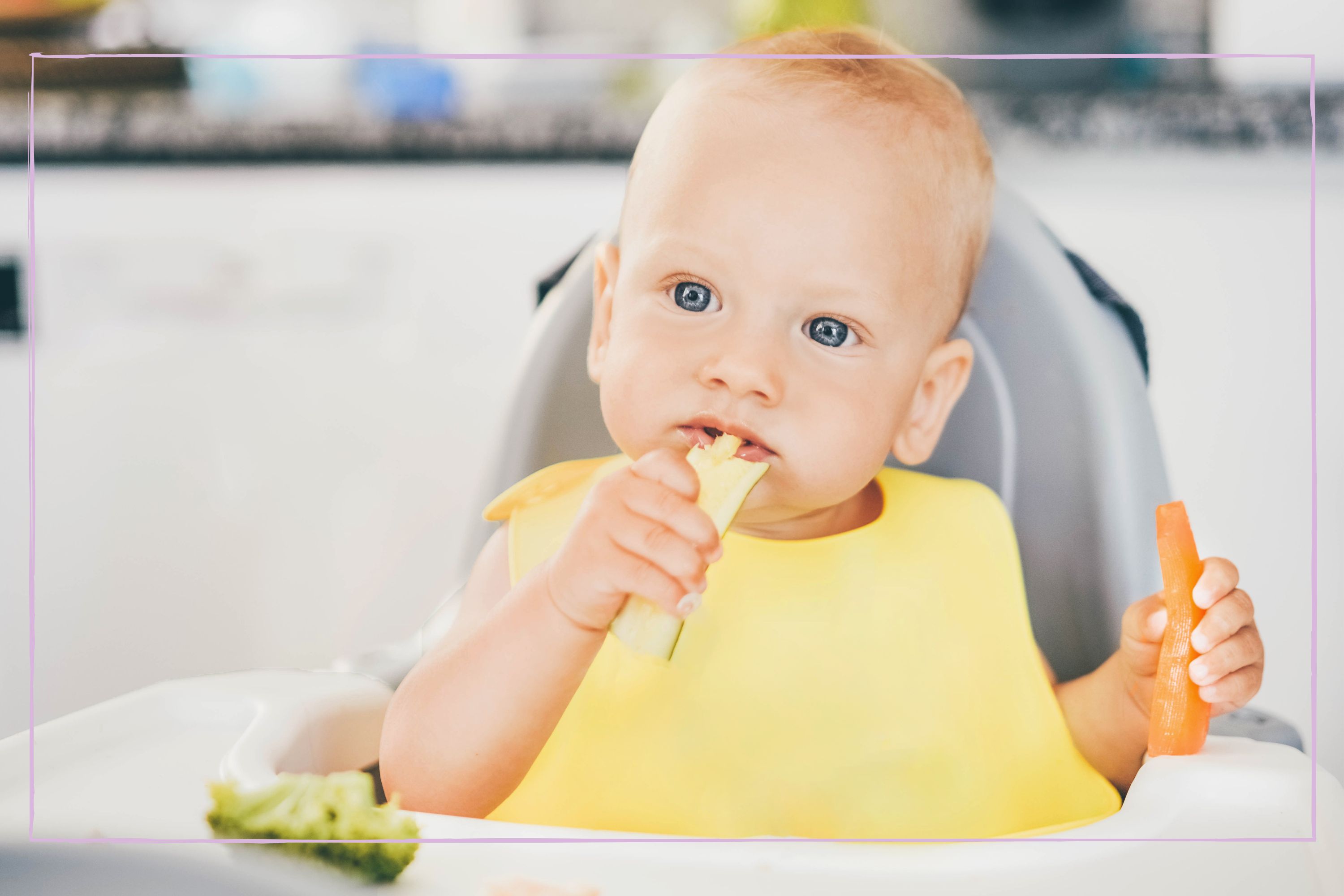
Baby-led weaning (BLW) or baby weaning is one of the choices parents face around the 6-month-old mark.
This method is becoming increasingly popular in the United States, as it promotes healthy eating habits and encourages babies to explore different textures and flavors. According to Dr. Tanya Altmann, a pediatrician and author of Baby and Toddler Basics, “Offering nutrient-dense, soft, and easy-to-eat foods like avocado, sweet potato, and banana is a great way to start baby-led weaning.” Dr. Altmann also suggests cutting foods into small, easy-to-grasp pieces, and being patient as your baby learns to self-feed.
The method was originally created by UK-based Dr. Gill Rapley, a former health visitor, and midwife, whose research showed that babies were more than capable of deciding when to start solids all by themselves - provided they are given the opportunity.
What is baby-led weaning?
Baby-led weaning is basically leaving food in front of your baby and allowing them to explore and eat what they fancy. This method allows your baby the autonomy to try different finger foods at their own pace, giving 6-month-old babies and older the chance to gain confidence, and independence when it comes to food.
The method is well-known in the UK, former health visitor and midwife Dr. Gill Rapley believes that BLW motivates a baby. In her BLW guidelines (2008) Dr. Rapley says; ‘This approach to the introduction of solids offers a baby the opportunity to discover what other foods have to offer as part of finding out about the world around him. It utilizes his desire to explore and experiment, and to mimic the activities of others.
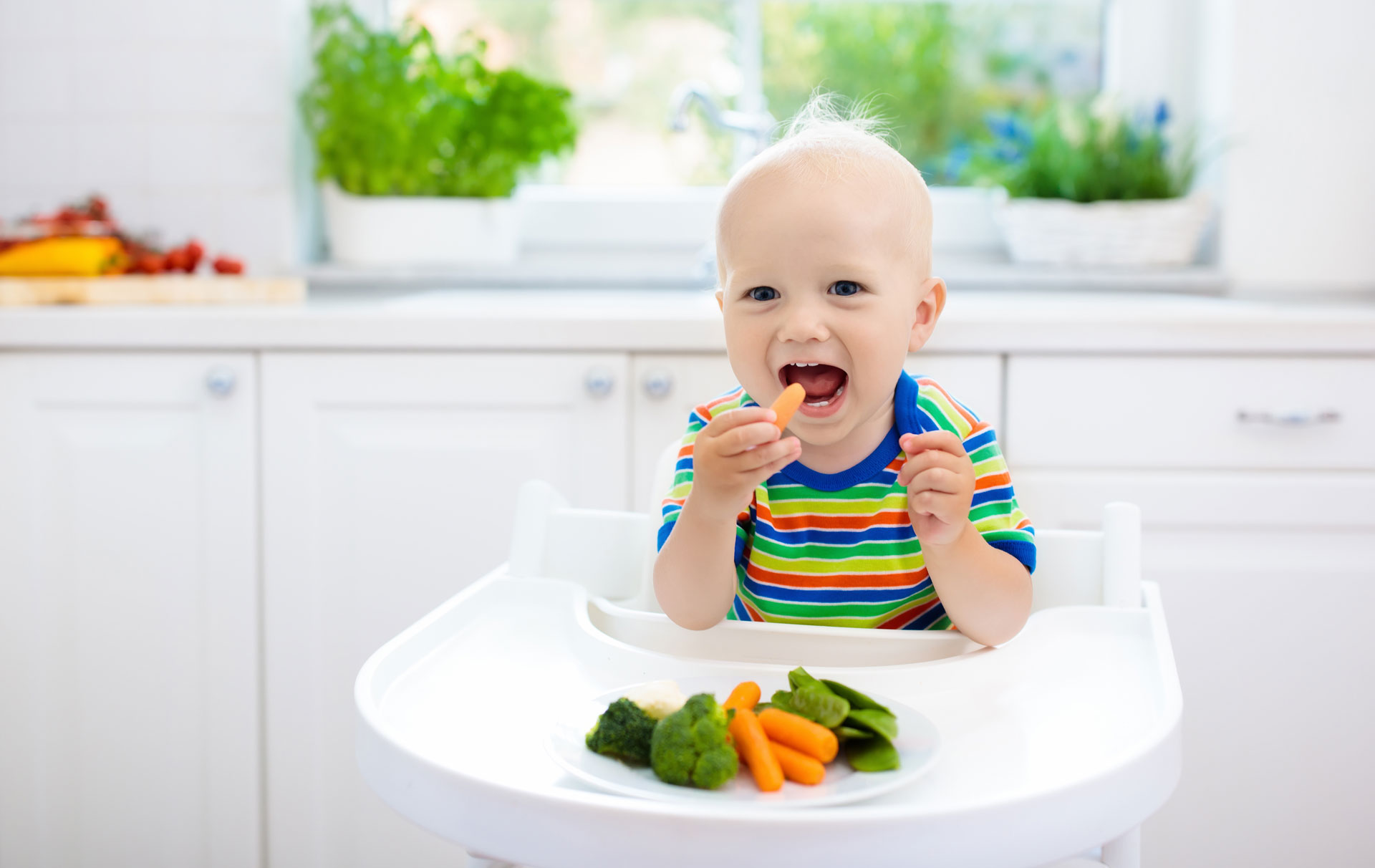
Dr Gill tells us; “Allowing the baby to set the pace of each meal, and maintaining an emphasis on play and exploration rather than on eating, enables the transition to solid foods to take place as naturally as possible. This is because it would appear that what motivates babies is curiosity, not hunger.”
Experts agree that BLW promotes healthy eating habits and helps babies develop important skills, such as hand-eye coordination and oral-motor control. According to pediatrician and author of ‘Feeding Baby Green’, Dr. Alan Greene, "BLW helps babies develop a healthy relationship with food, and allows them to explore and learn about different textures and flavors at their own pace."
GoodtoKnow Newsletter
Parenting advice, hot topics, best buys and family finance tips delivered straight to your inbox.
Studies have also found that BLW can help prevent picky eating and promote a diverse diet. "When babies are exposed to a variety of flavors and textures early on, they are more likely to accept and enjoy different types of food as they grow up," says registered dietitian Heather Mangieri.
In addition to the developmental benefits, BLW can also make mealtime easier for parents. "With BLW, parents don't have to spend as much time spoon-feeding their babies, which can be a real time-saver," says Dr. Ari Brown, a pediatrician, and author. Overall, baby-led weaning is a safe and effective approach to introducing solid foods that can help babies develop healthy eating habits and skills. If you're considering BLW for your baby, talk to your pediatrician and do some research to ensure a successful transition to solid foods.
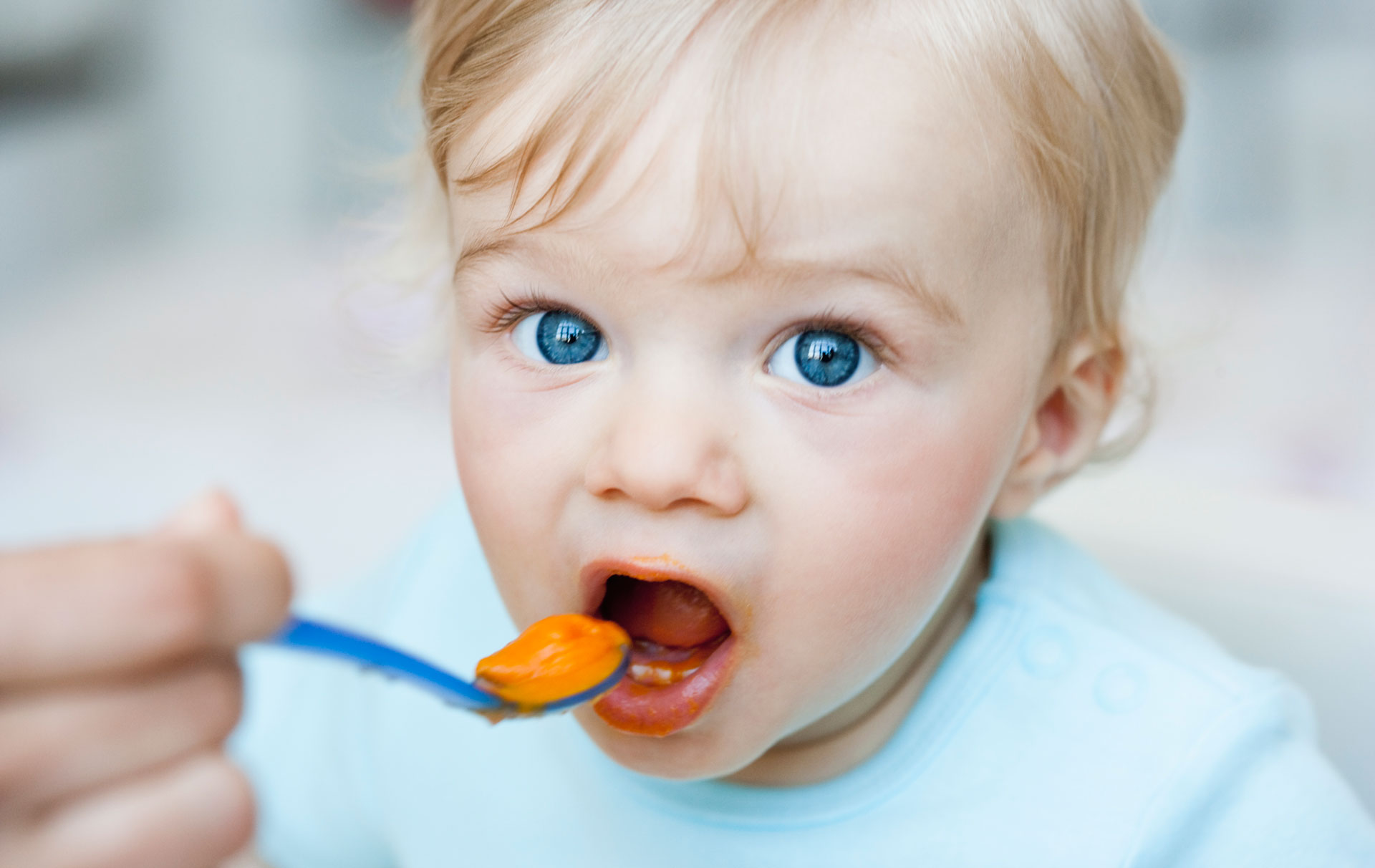
Baby-led weaning of weaning - what’s the difference?
The key difference between baby-led weaning and traditional weaning is the order the child learns to eat. If you start with purees and baby food, a baby will learn to swallow first which gradually develops into chewing, which can present problems when they are presented with more solid foods.
Critics of the method say baby-led weaning is messy and wasteful as the child will pick and choose a lot of foods and won’t eat everything you serve up. Babies can find it hard to chew on some finger foods, such as well-cooked meat, which is an important part of their diet.
A study conducted by researchers from the New Zealand's University of Otago looking at how dietary intake differs in infants who follow baby-led weaning found that while there were a number of positive impacts – including the fact that these babies were more likely to eat meals with their family – there were also less positive ones. Compared to babies who were spoon-fed the research found that these babies had lower intakes of iron, zinc, and vitamin B12. However, according to American Academy of Pediatrics’ research, the potential perks of baby-led weaning include
- Champions familiarity with a variety of textures and flavors. A number of studies have shown that babies who eat a variety of foods - including peanut products and fish, may be less likely to have food allergies later in life. Though always consult with your child’s pediatrician or your Health Visitor about how to best introduce nuts and seafood to your child’s diet as they are the most common childhood allergens
- Creates food autonomy. This can lead to better long-term appetite awareness. With spoon-feeding, the parent is in control. This could make babies eat faster and more than they need, which could lead to a habit of ignoring feelings of fullness. Baby-led weaning allows baby to self-regulate how much she eats based on her hunger levels. That could result in a lower chance of becoming overweight compared to children who are spoon-fed.
- Helps develop fine motor skills. Offering finger foods encourages the development of manual dexterity and hand-eye coordination skills.
- A cheaper way to eat. As baby will essentially be eating a variation of what the family eats.
With every pros list there's cons list and no feeding method is perfect. The downsides to baby-led weaning, are:
- It can be messy. Giving food autonomy to an infant will be messy - if you’re considering this method, process this and come to terms with it now. especially those who are learning how to hang onto foods and get them into their mouths.
- Tricky to identify allergies. If there are allergy concerns in the family, some pediatricians may recommend introducing foods one at a time. This helps to pinpoint which food was the culprit.
- Educate yourself on supplements. Baby-led weaning may require attention to iron levels. Breastfed babies get enough iron from breast milk until the baby is 4 months old — but levels can diminish at this point, so your doctor may recommend that your little one stays on an iron supplement through the first year as an added precaution. Where it can be hard for some babies to chew on many iron-rich foods. Mixing baby-led weaning with a spoon and puréed meat, green veggies, and fortified cereals can help fill the gap.
- Choking concerns. Giving babies certain solid foods, while exciting can be tinged with fears as it can be an overwhelming step for parents.
When to start baby-led weaning?
The best time to start baby-led weaning is when baby is around 6 months old, Pediatric experts now recommend starting solid foods at 6 months. Not all babies are the same so there are also signs to look out for which show your baby is ready for this method;
- Can sit up well and unaided
- Arms can reach for food
- Show significant head control
Research shows that 85% of infants gain these skills by 6-7 months and 96% have them by 7-8 months Most 6-month-old infants can grasp food, bring it to their mouth, chew and swallow. These skills mean babies can more independently feed themselves while weaning from human milk or formula nutrition.
While most babies will get the green light, those who have special needs and are unable to pick up and chew foods on their own might not be able to try baby-led weaning. Trust your instincts and look to your baby — some like taking the lead, while others don’t.
How to start baby-led weaning?
Prepare yourself, be ready with all the calm feelings, voice and body language. Prepare the space with the right high chair for your baby, any floor coverings if needed. Prepare the food, follow our tips below on what food to serve and how to keep it safe and fun. And, the best way to do it, is to just do it.
In the US The American Academy of Pediatrics (AAP) recommends feeding infants only breast milk for the first 6 months after birth up until 12 months, do do continue to do this along side baby-led weaning.
While continuing with breastmilk or formula, encourage your little one with a variety of nutritious finger foods that are suitable for their age. This is best done at dinner time when the rest of the family is eating. Watching you and others eat will entice them to try for themselves.
Stick with simple finger-shaped foods that they can easily grip in their hands. They might take to it quickly or they'll play around with foods, sucking or tasting. This is normal. Keep at it until they get more confident with their food. Recommended food for BLW includes cooked pieces of carrot, sweet potato, courgette, broccoli, potato, butternut squash, and apple. You can also give your little one raw foods too including pieces of banana, cucumber, peaches, avocado, pears, and melon.
Some parents like the best of both worlds and prefer to combine purees and add some finger foods too.
Never leave your baby unattended as there is a risk of gagging or choking. The gagging reflex is designed to move food away from your baby's airway, to the front of his mouth and he'll eventually spit the food out. Always be on hand to react if food goes down the wrong hole and he starts to choke. If you're worried, sign up for a free first aid guide from St John Ambulance and learn how to deal with a choking baby.
Safety tips for baby-led weaning
It’s more than natural to be concerned with choking when it comes to baby-led weaning. As long as you’re prepped and knowledgeable on what to offer, how to offer, and understand the clear signs that a baby is choking, as well as what to do in that situation, all will be okay.
Gagging is common in baby-lead weaning, it’s a safety response as it’s the body’s way of stopping the food from going too far back in the throat. It’s not the same as choking. When babies gag it’s their body handling the problem itself, try to stay calm and let it pass.
Baby-led weaning is safe if you are always present, you choose the right types of foods and you serve them in the right way. For Aisha's award-winning nutritionist, Priya Tew tells us: “Keep finger foods mushy and soft until you are sure they can manage, and never leave your little one unattended whilst eating. A little tip - cut up grapes and tomatoes into quarters. Remove the skins and pips.”
Studies into choking have come up with some helpful reminders;
- Cook and prepare food to the right shape, size, and texture for your child’s development
- Avoid small, sticky, or hard foods that are hard to chew and swallow
- Have your child sit up in a high chair while eating, no walking around
- Avoid letting your child eat in the car or stroller
- Keep mealtimes calm. Avoid distractions, disruptions, or rushing when eating
- Always pay close attention to what your child puts in their mouth
- Watch your child at all times while they’re is eating
- Be ready - Educate yourself on what to do if your child does choke
Best baby-led weaning foods
Your baby’s first finger foods should be soft enough for her to gum easily but firm enough to be cut into long, thick strips that she can easily grab. Foods that can’t be cut, like yogurt or oatmeal, can be served in clumps that your baby can rake, or maybe offer a preloaded spoon for them to lift to their mouth. As their confidence with solids grows and fine motor skills improve, you can start offering smaller pieces and slightly firmer textures.
- Soft Fruits: Soft fruits like ripe bananas, avocados, and peaches are great starter foods for babies. They're easy to digest and provide essential nutrients like potassium and healthy fats. Simply cut them into small, easy-to-hold pieces and let your baby explore.
- Cooked Vegetables: Cooked vegetables like sweet potatoes, carrots, and green beans are nutritious and easy for babies to chew. Cut them into small, bite-sized pieces and let your baby practice picking them up and bringing them to their mouth.
- Toast: Toast is a great finger food for babies and provides a nice change in texture. Cut it into small pieces and let your baby experiment with spreading soft foods like avocado or peanut butter on top.
- Cheese: Cheese is a good source of calcium and protein and makes for a tasty snack for babies. Cut it into small cubes or shred it and let your baby explore the texture.
- Eggs: Scrambled eggs or omelets are a great source of protein for babies. Cut them into small pieces and let your baby practice picking them up with their hands.
According to Dr. Tanya Altmann, a pediatrician and author of Baby and Toddler Basics, “Offering nutrient-dense, soft, and easy-to-eat foods like avocado, sweet potato, and banana is a great way to start baby-led weaning.” Dr. Altmann also suggests cutting foods into small, easy-to-grasp pieces, and being patient as your baby learns to self-feed.
It's important to keep safety in mind when introducing solid foods to babies. Always supervise your baby during meal times and cut foods into small, safe sizes. Avoid hard, crunchy foods like raw carrots or popcorn, as they can be a choking hazard.
Dr. Stephanie Canale, a board-certified pediatrician and founder of Lactation Lab, recommends introducing a variety of foods to babies early on. “Studies have shown that the more diverse the diet, the better the gut health and overall immune system function,” says Dr. Canale.
Overall, the best foods to use first for baby-led weaning are soft, nutrient-dense foods that are easy for babies to chew and swallow. Remember to cut foods into safe sizes and always supervise your baby during meal times. With patience and persistence, baby-led weaning can be a fun and rewarding experience for both you and your baby.
Tips for successful baby-led weaning - from parents
- Invest in a big bib. Mum-of-twins Dionne tells us; “Initially, to keep it cheap, I used wipeable art smocks from IKEA. Though they weren’t waterproof and sometimes the girls would be sodden. So I eventually invested in actual long-sleeved weaning waterproof bibs.” VIEW AT AMAZON, £14.99
- Start small. Dad-of-one, Lee tells us; “I noticed that if I put too much in front of Alf, he would barely touch it. My mum-in-law suggested just one or two bits of food with space in between and he wolfed them down. I think, like adults, too many choices can overwhelm.”
- No bowls or plates. Mum-of-four Louise soon learned not to worry about plates or bowls. “By baby number three,” she tells us; “I realized bowls just get thrown on the floor at the beginning. I would just place the food right on the table or high-chair tray, and let the party start.”
- Make it fun. Mum-of-two, Lisa tells us; “I used to worry that [my daughter] needs to learn that you don’t play with your food when really meals should be seen as curiosity-led playtime. A time when she explores different textures and experiments with tasting and chewing. Baby-led weaning is all about getting comfortable with various foods.”
- Make slippy foods easy to hold. Dad-of-one Mark tells us, being able to hold the food is a bonus, so I would wash the skins of banana and avocado - the slippery food groups - and help my son hold them while he ate.”
- Get the knowledge. Mum-of-one, Grace tells us that preparation was key when she started baby-led weaning. “I went with my three Ps. Preparation - I have everything to hand including helpful apps. Positive attitude - I stayed calm and positive as my baby looked to me to set the scene. And, Proactive - not reactive. I followed the rules, I didn’t cut corners on any of the expert advice.”
- Relax. Mum-of-two, Aisha tells us; “It took baby two before I started to chill out. I researched and realized my baby gets the nutrition she needs from the formula I still feed her in that first year, so I sat back and let her set the pace.” mpty list
One of the main points to remember when choosing BLW or the traditional weaning method is that success rates will vary from child to child. The most important thing to do is to be in touch with your baby’s needs and cues. Every baby is different and will develop at a different pace. Talk to your health visitor or GP before trying baby-led weaning especially if you have a family history of allergies, digestive problems, or food intolerances or if your baby has special needs or was born prematurely.
Related Features:
- Baby food meal planner: weaning at 6-7 months
- Baby food meal planner: weaning at 7-9 months
- Baby food meal planner: weaning at 9-12 months
Video of the Week:
Stephanie has been a journalist since 2008, she is a true dynamo in the world of women's lifestyle and family content. From child development and psychology to delicious recipes, interior inspiration, and fun-packed kids' activities, she covers it all with flair. Whether it's the emotional journey of matrescence, the mental juggling act of being the default parent, or breaking the cycle of parenting patterns, Stephanie knows it inside out backed by her studies in child psychology. Stephanie lives in Kent with her husband and son, Ted. Just keeping on top of school emails/fundraisers/non-uniform days/packed lunches is her second full-time job.
-
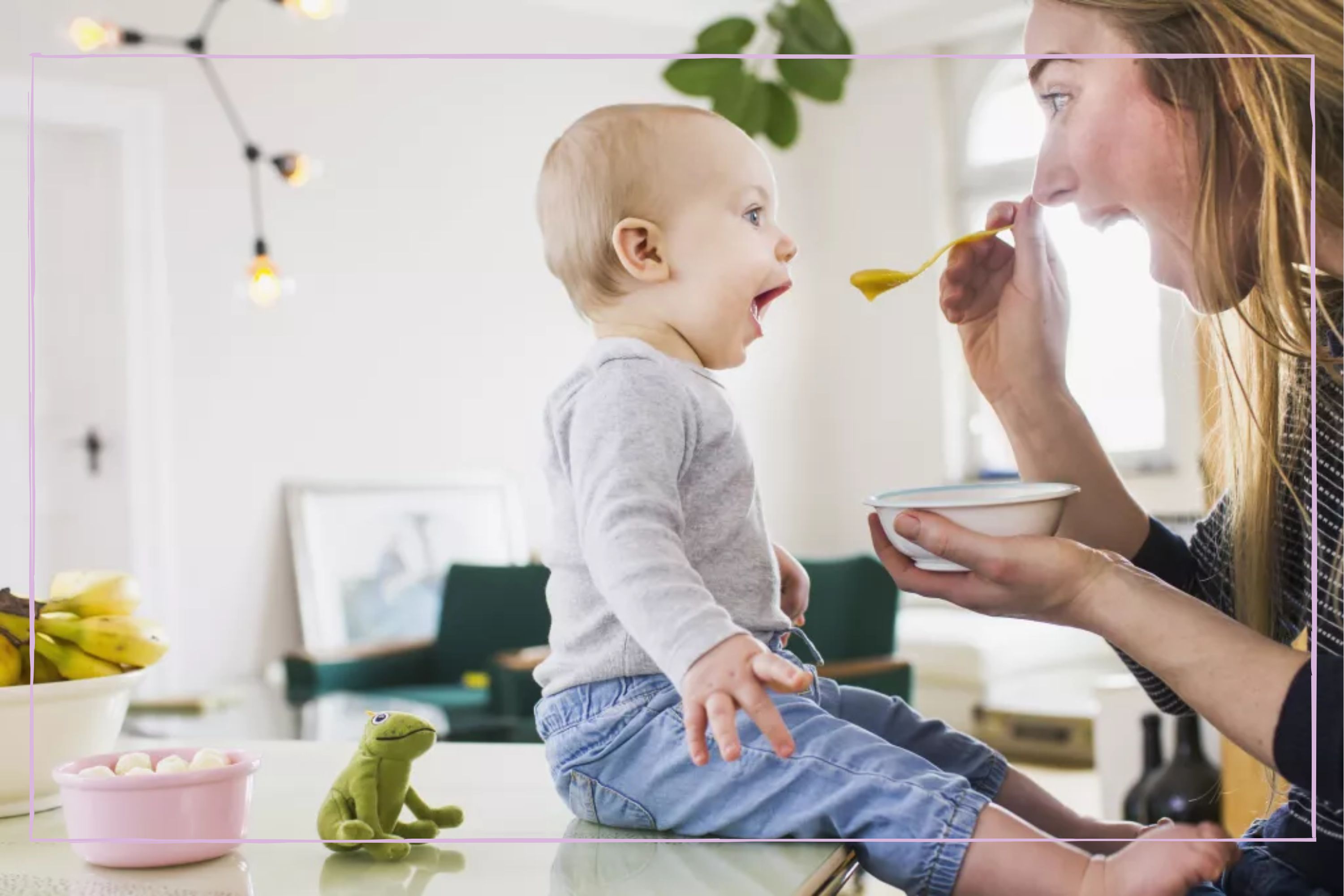 How to start weaning - according to the experts
How to start weaning - according to the expertsAn ultimate guide on how to get going
By Lisa Harris Last updated
-
 Why glass baby bottles are better than plastic baby bottles
Why glass baby bottles are better than plastic baby bottlesBy Grace Walsh Published
-
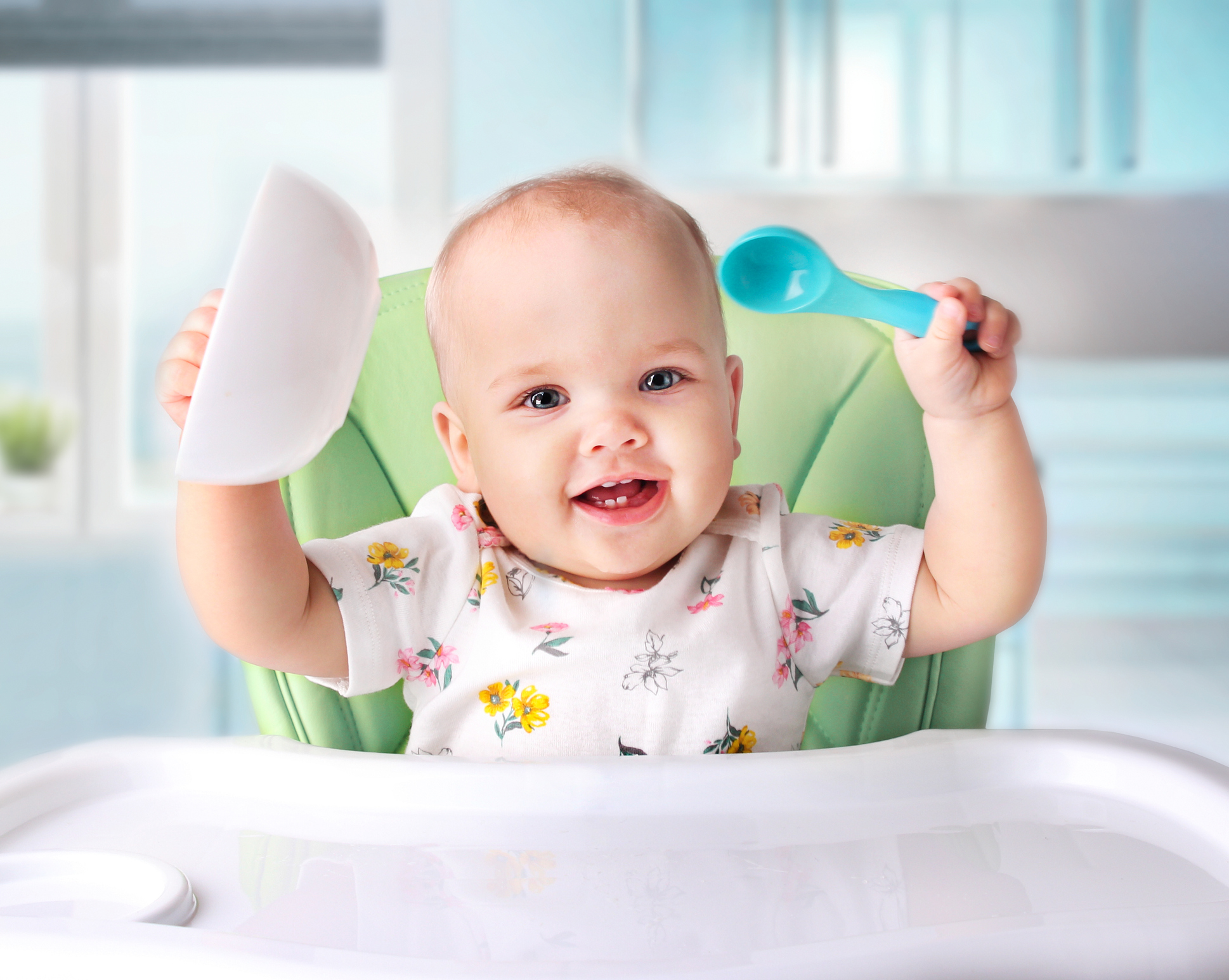 Expert reveals her top tips for keeping 'hangry' babies satisfied when weaning
Expert reveals her top tips for keeping 'hangry' babies satisfied when weaningHungry and unhappy often sit in the same sentence when it comes to our bundles of joy
By Miriam Habtesellasie Published
-
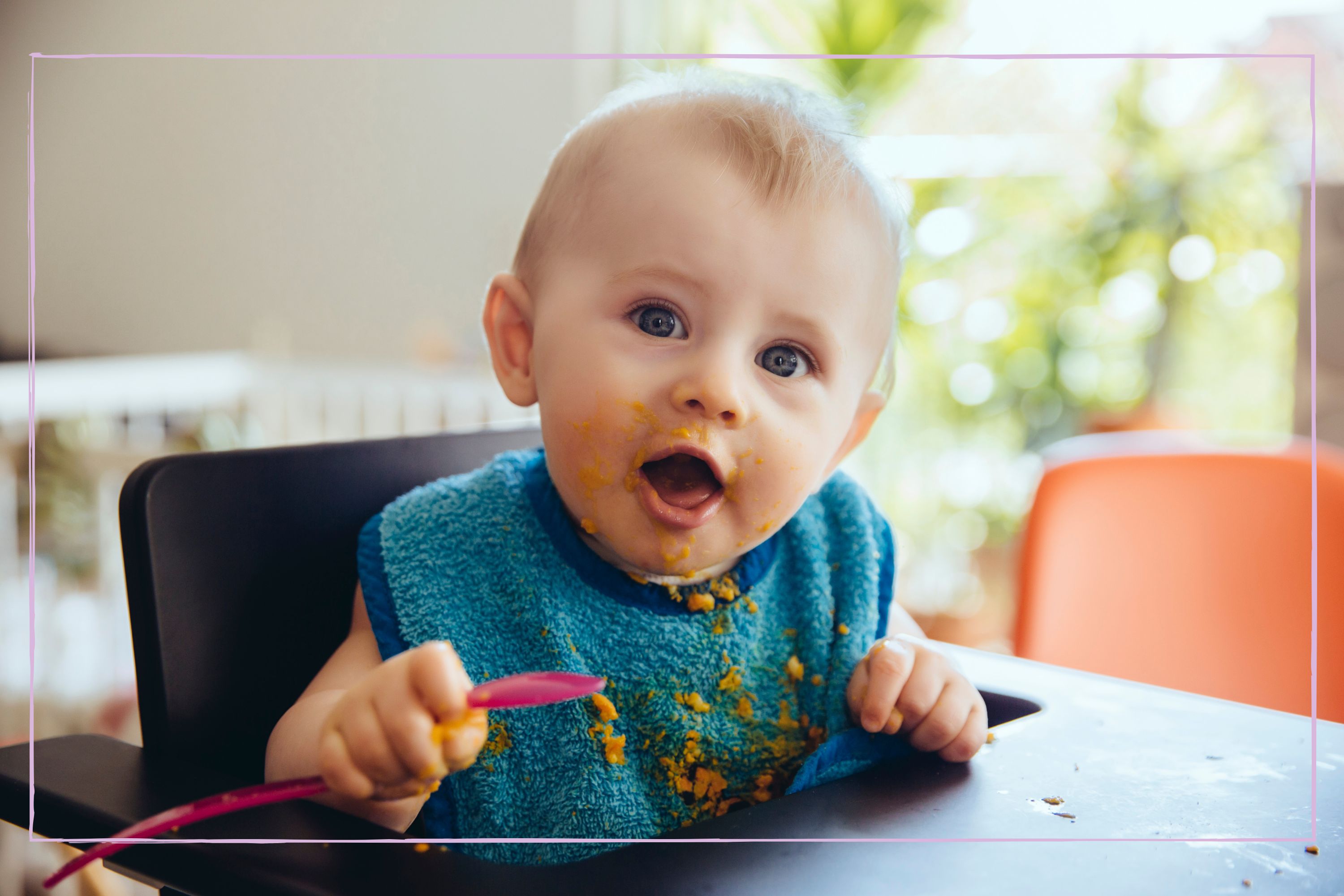 Baby food meal planner: Weaning at 7 - 9 months
Baby food meal planner: Weaning at 7 - 9 monthsThis baby food meal planner 7 - 9 months will help your baby used to a few lumps, bumps and new textures for stage 2 of weaning.
By Jennifer Shepherd Last updated
-
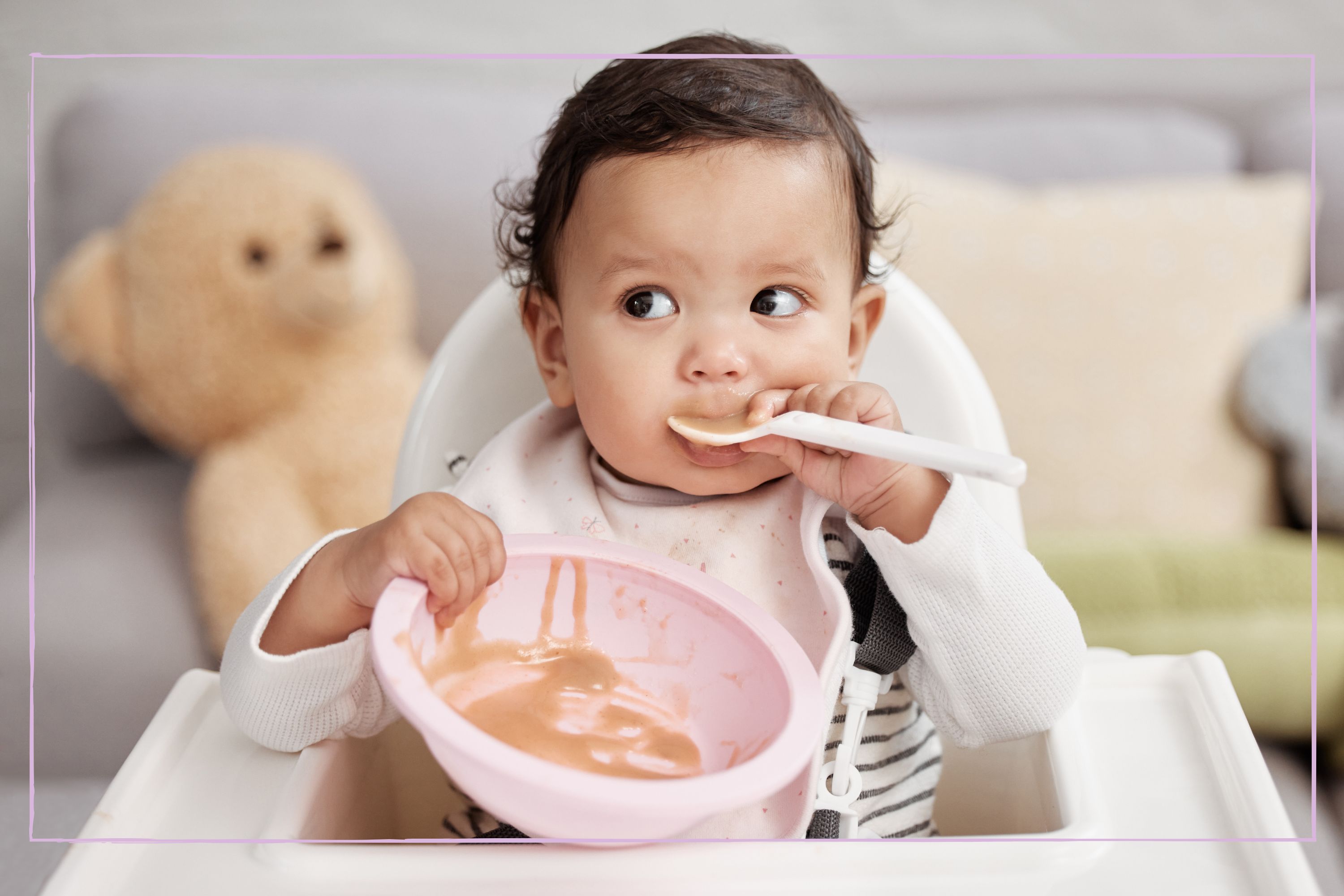 Baby food meal planner: Weaning at 6 - 7 months
Baby food meal planner: Weaning at 6 - 7 monthsStage 1 of baby weaning is a new experience for your baby. Once weaning picks up at around 6-and-a-half to 7 months, use this baby food meal planner to plan your baby's meals.
By Jennifer Shepherd Last updated
-
 Wean in 15: Joe Wicks reveals plans for a new toddler cookery book
Wean in 15: Joe Wicks reveals plans for a new toddler cookery bookBy Aleesha Badkar Published
-
 How to bottle feed a newborn: Top five tips and advice from experts
How to bottle feed a newborn: Top five tips and advice from expertsWe've asked the experts how to bottle feed a newborn - here's everything you need to know.
By Ellie Hutchings Last updated
-
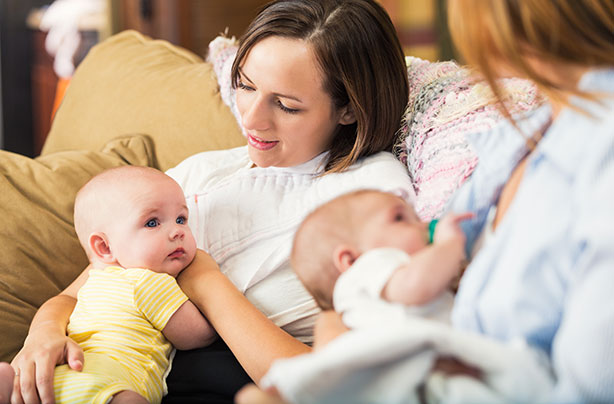 Breastfeeding or bottle feeding? Deciding what's best for you and your baby
Breastfeeding or bottle feeding? Deciding what's best for you and your babyDeciding whether to breast or bottle feed? These pros and cons could help you.
By GoodtoKnow Published